VOL.46, NO. 1
Monstrous Beckett: Viewing Eh Joe through the Peephole of Psycho
Graley Herren
Martin Esslin famously opens The Theatre of the Absurd with an account of the San Quentin Penitentiary performance of Waiting for Godot. “The curtain parted. The play began. And what had bewildered the sophisticated audiences of Paris, London, and New York was immediately grasped by an audience of convicts” (19). Godot’s sympathetic reception from an audience of hardened criminals led Esslin to ask, “Why did a play of the supposedly esoteric avant-garde make so immediate and so deep an impact on an audience of convicts?” (21) Esslin believed that this rapport was rooted in the frustration and despair of being trapped in a life devoid of hope or freedom. That is one valid answer. But Beckett’s criminal appeal is sometimes more sinister than his critics are comfortable admitting. The pathological, the perverse, and the sadistic occupy an under-excavated substratum of his oeuvre. The present article attempts to shine a light into some of the darker corners of what I term “monstrous Beckett.” For all his well-deserved acclaim as one of the canonical writers of the previous century, there is a substratum of criminal pathology, sexual perversion, and voyeuristic sadism in Beckett’s work, features that put him much more at home with conventions of horror than defenders of his august reputation would generally allow. For a prime example, consider the striking resemblances between Beckett’s teleplay Eh Joe (1965) and Alfred Hitchcock’s Psycho (1960). Although I noticed the visual and aural similarities between these two works many years ago, I simply dismissed it as an odd coincidence. What could the morose, subdued, cerebral work of Nobel Laureate Beckett have to do with Hitchcock, the master of suspense and the father of the slasher film? Over the course of the present study, however, and more broadly over the course of two decades studying Beckett’s film and television work, I have come to revise some of my long-held views. Juxtaposed against Psycho and its sources, Eh Joe serves as a representative case study in monstrous Beckett.
Alfred Hitchcock’s film was based on Robert Bloch’s novel Psycho, and both owe their genesis to the heinous crimes of Ed Gein. “Although the spelling of Gein would lead one to believe that the name rhymes with fine,” glosses Harold Schechter, “it is actually pronounced with a long e, as in fiend” (iv). Like Beckett, Gein was born in 1906 and raised by a very strict Protestant mother. He lived in obscurity in Plainfield, Wisconsin, until his arrest on November 12, 1957—a mere two days before the San Quentin performance of Godot. He was taken into custody as a suspect in the disappearance of Berenice Worden, the proprietor of a local hardware store. When police went out to the Gein farm to investigate, they walked into a scene out of a nightmare. Berenice Worden was beheaded and hung upside down, field-dressed like a deer. Investigators discovered a collection of human heads, various household items and furniture crafted out of tanned human skin, boxes containing assorted body parts, masks made out of women’s faces and hair, an entire body suit made from a woman’s arms, breasts, torso, and legs, the heart of Bernice Worden in a plastic bag, her warm entrails wrapped in newspaper, and her head in a burlap sack. Further investigations confirmed that Gein had killed Worden as well as a local bar owner, Mary Hogan. However, the majority of his macabre collection came from robbing graves. The corpses were all women of about his mother’s age when she died.
According to court psychiatrists, Gein’s crimes were rooted in his obsessive attachment to his late mother. He identified with her so closely that he wished to become a woman, going so far as to put on the skin masks and body suit and wear them around the house. After his mother’s death, he continued to feel a close connection to her. His psychiatric report states that “since the death of his mother he has had feelings that things around him were unreal and at one time, shortly after the death of the mother, he felt that he could raise the dead by will power. He also stated that he heard his mother talking to him on several occasions for about a year after she died” (Schechter 186). According to a Time magazine interview with the chief psychiatrist, “For Gein, cutting up women who reminded him of his mother and preserving parts of them satisfied two contradictory urges: to bring her back to life and to destroy her as the source of his frustration” (qtd Schechter 180). In December 1957, he was pronounced legally insane. He was confined to Wisconsin’s Central State Hospital for the Criminally Insane where he spent the rest of his life.
Novelist Robert Bloch, screenwriter Joseph Stefano, and filmmaker Alfred Hitchcock took considerable creative license in adapting the monstrous facts of Gein’s crimes and making them more palatable for general audiences. Following Bloch’s lead, Stefano and Hitchcock transformed the mother-obsessed killer into a timid motel keeper named Norman Bates. One rainy night Norman (played by Anthony Perkins) sheepishly checks in Marion Crane (played by Janet Leigh) as the lone occupant at the otherwise deserted Bates Motel. Her night and life end when she is stabbed to death in the shower, one of the most famous scenes in movie history. The killer is ostensibly Norman’s mother, and he helps her cover up the crime by sinking Marion’s body and car in a nearby swamp. Investigations ultimately reveal that his mother is in fact dead. He keeps her body preserved in their spooky house, a secret he kills to protect. He identifies so closely with his domineering mother that they hold conversations: he speaks his lines and then shifts to a woman’s voice to ventriloquize her lines. Norman sometimes dresses as his mother and punishes anyone who threatens to come between them, be it the beautiful Marion Crane or the inquisitive detective Arbogast. The spectator ultimately discovers that it was Norman dressed as Mother who killed both Marion and Arbogast and tried to kill Marion’s sister before being apprehended.

In the legendary final scene of Hitchcock’s Psycho, the camera dollies ever closer toward Norman, wrapped in a blanket in the police station holding room. With the frame tightening like a noose around the speechless, cornered Norman, an accusatory female voice-over intones:
It’s sad when a Mother has to speak the words that condemn her own son, but I couldn’t allow them to believe that I would commit murder. They’ll put him away now, as I should have years ago. He was always bad and in the end, he intended to tell them I killed those girls and that man, as if I could do anything except just sit and stare, like one of his stuffed birds. Oh, they know I can’t even move a finger, and I won’t. I’ll just sit here and be quiet, just in case they do suspect me. [A fly buzzes close, and then continues buzzing and flying about Norman’s face.] They’re probably watching me. Well, let them. Let them see what kind of a person I am. [A pause as the fly lights on Norman’s arm.] I’m not going to swat that fly. I hope they are watching. They’ll see. They’ll see and they’ll know, and they’ll say, “Why, she wouldn’t even harm a fly.” (Stefano 128-29)
Norman then looks up, gazes directly into the camera, and uncurls a devious grin [see Figure 1].
According to the film’s psychiatrist, in a fit of jealous rage Norman murdered his mother and her lover [named Joe in Bloch’s novel (161)]. Norman then stole her corpse from the graveyard and hid it in his cellar. The psychiatrist in the film asserts, “He began to think and speak for her, give her half his life, so to speak. At times he could be both personalities, carrying on conversations. At other times, the mother half took over completely. He was never all Norman, but he was often only mother. And because he was so pathologically jealous of her, he assumed that she was as jealous of him. Therefore, if he felt a strong attraction to any other woman, the mother side of him would go wild” (Stefano 126). This accounts for Norman in the guise of his shrewish mother murdering the alluring Marion and disposing of her in a watery grave. According to the psychiatrist, “when the mind houses two personalities, there’s always a conflict. A battle. In Norman’s case, the battle is over, and the dominant personality has won” (Stefano 127).
I have no direct confirmation that Beckett ever saw Psycho. For that matter, if Samuel Beckett ever made direct reference to Alfred Hitchcock, or vice versa, I have yet to discover it. This mutual silence is remarkable given their contemporaneity, geographic proximity, notoriety, and overlapping artistic interests. The two icons certainly knew and worked with some of the same people, most notably the greatest Beckettian performer of them all, Billie Whitelaw. In 1972, the same year Beckett nearly drove her mad with Not I, Whitelaw appeared in Hitchcock’s Frenzy. Hitchcock may be the only director who rivals Beckett for the excruciating demands he made on his actresses. Reflecting on her collaboration with Hitch , Whitelaw quipped, “Here was yet another notorious monster (to judge by the books published after his death) with whom I got on like a house on fire” (206). By “another” she assuredly means “in addition to Beckett.” I leave it to those who knew them whether terms like “monster” apply accurately to the artists; my concern is exclusively with the art. My comparison is based on recognitions of visual and aural affinities and shared sensibilities within the work itself. Of course, as Esslin’s study admirably shows, artists need not collaborate directly to share similar philosophies, techniques, and preoccupations. Even if Beckett and Hitchcock were oblivious of one another while separately exhuming adjoining plots, the common ground linking Psycho to Eh Joe is no less compelling, and no less disturbing.
Joe is confined to a solitary room much like Norman Bates and Ed Gein. The screen itself becomes claustrophobic as the camera steadily stalks Joe just as it did Norman. Like both Gein and Norman, Joe is haunted by a persecuting female voice. She starts in on him: “Joe… [Eyes open, resumption of intentness.] Joe… [Full intentness.] Thought of everything? ...Forgotten nothing?...You’re all right now, eh?...No one can see you now….No one can get at you now….Why don’t you put out that light?...There might be a louse watching you” (CDW 362). Interestingly, in an earlier draft it wasn’t a louse but a fly that was watching him (Pountney 131), perhaps a descendent of the fly spared in the conclusion of Psycho. Voice identifies herself as the latest in a series of murmurings to have haunted Joe, beginning with his father and followed by his mother. He has managed to silence each of these previous voices, “Throttling the dead in his head” as Voice puts it (CDW 363). Beckett never visually depicts any slasher spectacles like Hitchcock’s shower scene, but he did conceive of Voice’s conflict with Joe in comparable terms. In a letter to his leading American director, Alan Schneider, he described Voice as “A dead voice in his head. […] Attacking. Each sentence a knife going in, pause for withdrawal, then in again” (SB to AS, 7 April 1966; Letters IV 22) [see Figure 2].
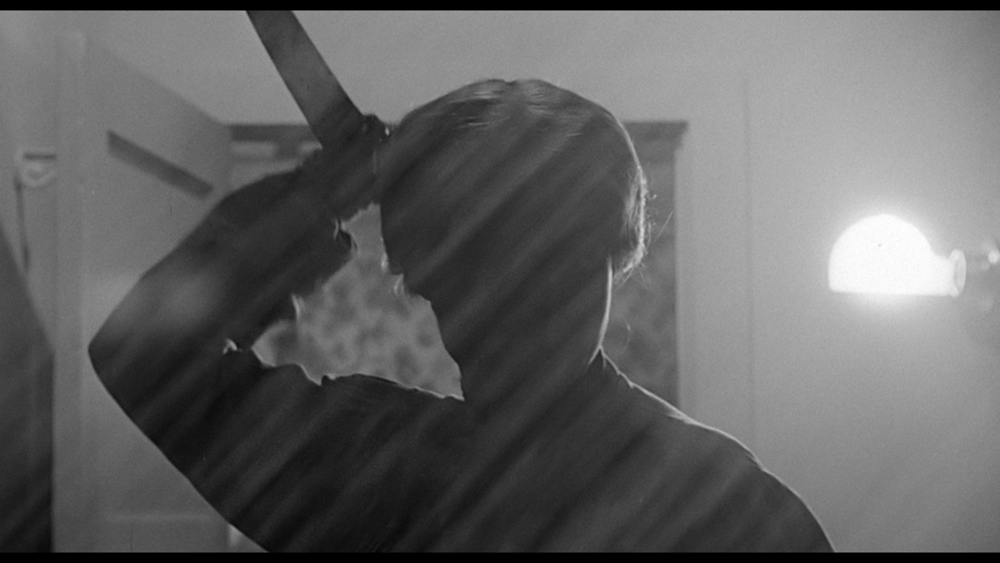
At the climax of this verbal onslaught, Voice describes in intimate detail the death of another young woman, one of Joe’s jilted lovers, “The green one….The narrow one” (CDW 365). We are informed that this pale waif overdosed by the sea out of despair over Joe’s abandonment. But he wasn’t there to witness it; no one was. He only read about it subsequently in her obituary. Therefore, the suicide described so meticulously by Voice is purely speculative, an exercise in imaginative re-creation. Eh Joe completely reverses the old playwriting maxim, “show, don’t tell”: Beckett’s teleplay is all telling and no showing, all talk and no action. Nevertheless, Joe exhibits kinship with his predecessors by metaphorically exhuming the dead and imaginatively resurrecting them—only to kill them anew, “throttling the dead in his head” (CDW 363). As the consciousness behind Voice, Joe also performs a kind of vocal transvestitism analogous to Gein’s mask and body suit or Bates’s murderous drag.
Though the affinities are numerous and significant, one mustn’t skip lightly over crucial differences. Ed Gein and Norman Bates were both killers and grave robbers. In a literal sense, Joe has no blood on his hands and no dirt under his nails. That said, the desires that drive his imaginary re-creation of the young woman’s suicide are not so different from the desires that motivated Gein and Bates. Like most other commentators on Eh Joe, I have long interpreted the play as an examination of guilt and self-revulsion; Irish Catholic Joe is berated by his conscience because his callous mistreatment of his former lover drove her to suicide. However, viewing Eh Joe through the peephole of Psycho casts Joe’s fantasy in a very different light. Joe gets a kinky, sadomasochistic thrill out of this imagined scene. Furthermore, both Hitchcock and Beckett implicate the voyeuristic spectator as complicit in this salacious scopophilic pleasure.
Years before psychoanalytic film theory provided a lexicon and framework for understanding the phenomenon, Beckett presents a case study of “the male gaze” in Eh Joe. The term was coined in the early 1970s by Laura Mulvey. In her pioneering essay “Visual Pleasure and Narrative Cinema” Mulvey critiques the patriarchal structure of traditional narrative films where images of women are exploited to feed the spectator’s visual appetites. She posits two primary mechanisms for this exploitation, scopophilia (Freud’s term for pleasure derived from looking) and narcissism (the Lacanian concept of identifying with a mirror or screen image):
The first, scopophilic, arises from pleasure in using another person as an object of sexual stimulation through sight. The second, developed through narcissism and the constitution of the ego, comes from identification with the image seen. Thus, in film terms, one implies a separation of the erotic identity of the subject from the object on the screen (active scopophilia), the other demands identification of the ego with the object on the screen. (61)
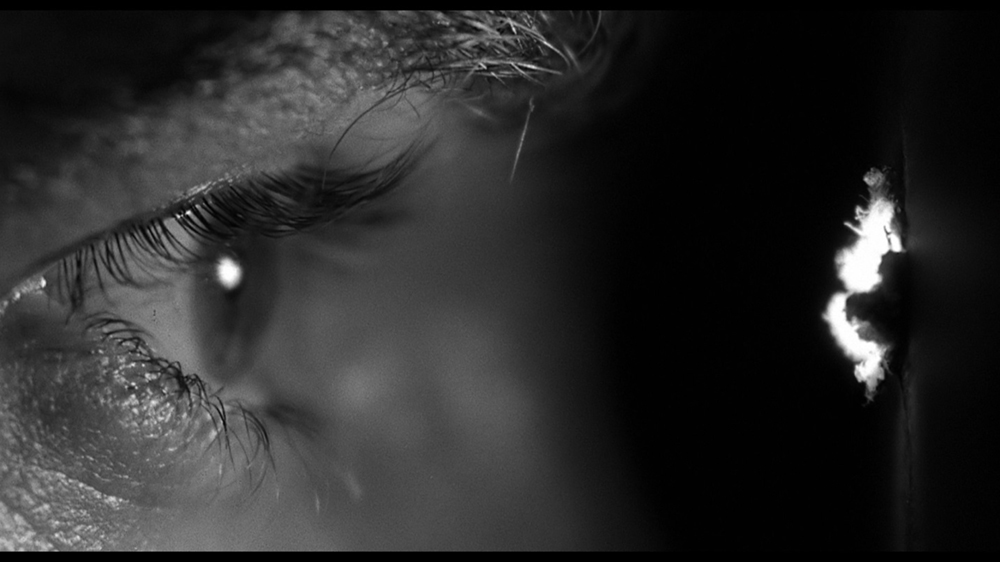
Whether visual pleasure is accomplished through scopophilic stimulation or narcissistic identification, Mulvey finds the same patriarchal biases at work: “In a world ordered by sexual imbalance, pleasure in looking has been split between active/male and passive/female” (62). She cites Alfred Hitchcock as exemplar of the “fetishistic scopophilia” school of cinema: “Hitchcock uses the process of identification normally associated with ideological correctness and the recognition of established morality and shows up its perverted side” (65). Though she doesn’t mention Psycho by name, Mulvey clearly has scenes like Norman’s peephole voyeurism in mind when she observes, “Hitchcock’s skillful use of identification processes and liberal use of subjective camera from the point of view of the male protagonist draw the spectators deeply into his position, making them share his uneasy gaze” (66) [see Figure 3].
According to previous commentators, one of Beckett’s chief accomplishments in Eh Joe is his subversion of the male gaze. Karen Laughlin asserts, “From the standpoint of feminist film theory, we might credit Beckett with refusing to indulge the potentially sadistic ‘male gaze,’ in that the female lovers are never presented for our actual viewing pleasure but always remain off screen. Instead we scrutinize Joe himself, and his eventual immobility makes him at best a problematic embodiment of active masculinity” (164-65). In a similar vein Katherine Weiss argues,
Beckett challenges the conventional gaze of the camera. The male gaze has traditionally been associated with the camera eye. The camera, hence, becomes a tool for patriarchal control as it captures and objectifies the woman on film. Beckett, however, associates the camera’s gaze with female ghosts confronting the male protagonists, exposing their inability to assert their power over women and their stories, consequently tormenting them with their own weaknesses. (11)
Trish McTighe agrees, contending, “It is interesting to note how Joe as object of the look subverts the traditional active male gaze upon the passive female object within a film. It is Joe who becomes the spectacle while that active/passive heterosexual division of labor on screen that Laura Mulvey describes […] is disrupted and undermined” (41). I once shared these opinions. Here I am on the record in Samuel Beckett’s Plays on Film and Television describing Joe as “a fetishistic image of masculine passivity, an image completely at odds with the conventions of ‘the male gaze’” (60). What comparison with Psycho has taught me, however, is that there’s a great gap between the gallous story we critics have been telling about Beckett’s subversion of the male gaze and the dirty deed actually depicted in Eh Joe.
It must first be conceded that Beckett withholds any visually titillating scenes comparable to Hitchcock’s shower sequence. Hitchcock sensationally combines sex and violence, splices images of the desired woman into fetishized body parts, fixes her on display for scopophilic pleasure, and then punishes her for both the pleasures she gives and the threats she poses. Norman first reduces Marion to a sexual object by spying on her through a peephole, and then he reduces her further to the status of inorganic object—a lifeless subject—just another prop on the set, an image on screen [see Figure 4]. In his brilliant essay, “‘If Thine Eye Offend Thee…’: Psycho and the Art of Infection,” George Tolles argues that Marion’s death does not signify her exit from the film but her apotheosis in relation to the camera, the screen, and the spectator:
Marion does not appear to lose her place in the world of Psycho after being brutally slain. Instead, one has the feeling that she has at long last found her proper relationship to that world. When Hitchcock’s camera seems to emerge from the darkness within the drain through Marion’s eye, and then eases back further to reveal her twisted head insensibly pressed against the floor, the camera comes as close as it ever will to caressing the object placed in front of it. We are being invited—before we have had any chance to recover our equilibrium—to participate in the camera’s eerie calm by looking at things in the ways that the camera instructs us. How evenly dead this girl is. How perfectly and compliantly she harmonizes with the other blank surfaces in her environment. (163)
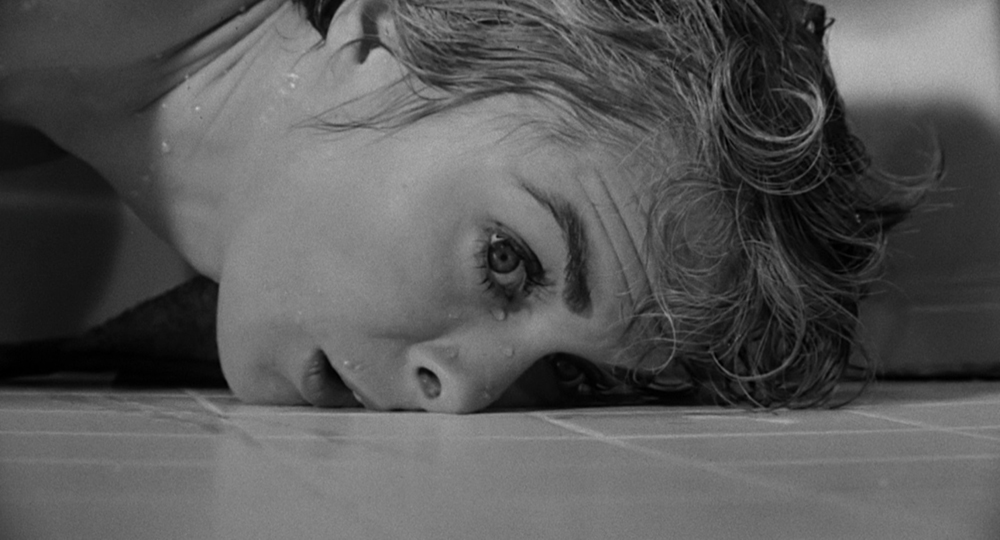
Beckett opts not to depict “the green one” graphically as an image on screen. Nevertheless, Eh Joe’s “peephole aesthetic” (Zinman 53) remains unremittingly voyeuristic. The spectator is urged to identify completely with peeping Joe’s inward gaze upon the death scene. She may not be literally objectified on screen, but she is no less an object of sadistic male desire than the dead ingénues in Poe’s “Annabel Lee,” Browning’s “Porphyria’s Lover,” Yeats’s “He Wishes His Beloved Were Dead”—or Hitchcock’s Psycho. Beckett doesn’t show it, but Voice does tell it. In fact, Voice’s account of the green one’s suicide is strikingly cinematographic. She effectively dictates the shooting script for a silent film, one framed not by the camera but by the mind’s eye of Joe and of the spectator.
The scene begins on a “Warm summer night” with the young woman “Sitting on the edge of her bed in her lavender slip.” The scene cuts to an exterior shot of her walking “Down the garden and under the viaduct,” arriving at the seashore. There she tries to drown herself. “Cut a long story short doesn’t work.” She only succeeds in getting “sopping wet” and returning to her room. She tries a different tactic by slitting her wrist with a Gillette, “The make [Joe] recommended for her body hair.” She retraces her steps to the shore, but “Cut another long story short doesn’t work either.” She “Tears a strip from the slip” to staunch her wound and returns again to her bedroom (CDW 365-66). If we could see her at this point—and we are urged by Voice to visualize her in intimate detail—we would see her drenched in sea water, tears, and blood in a ripped undergarment, “Slip clinging the way wet silk will” (CDW 366). Anna McMullan perfectly describes the image as “her wet silk slip clinging to her body in Hitchcockian style” (96). Finally she retraces her steps, overdoses on sleeping pills, and returns to the shingle to die by the moonlit sea. Voice’s verbal description practically storyboards the scene, with close-ups galore of fetishized body parts, an inner “male gaze” that would make Laura Mulvey wince as surely as it would put a twinkle in Hitchock’s eye:
Now imagine….Before she goes….Face in the cup….Lips on a stone….Taking Joe with her….Light gone….‘Joe Joe’….No sound….To the stones […] Imagine the hands….The solitaire….Against a stone….Imagine the eyes…. Spiritlight….Against a stone….Imagine the eyes […] Breasts in the stones….And the hands….Before they go….Imagine the hands….What are they at?…In the stones….[Image fades, voice as before.] What are they fondling?...Till they go….There’s love for you….Isn’t it, Joe?...Wasn’t it, Joe?...Eh Joe?...Wouldn’t you say?...Compared to us….Compared to Him….Eh Joe?... [Voice and image out. End.]” (CDW 366-67; italics in original)
Although the published script does not mention it, both the BBC production overseen by Beckett and the SDR production directed by him conclude with a smile, strongly recalling the mischievous grin of Norman Bates at the end of Psycho. Beckett may not have been intentionally alluding to Hitchcock’s famous final sequence, but the family resemblance between Joe and Norman is unmistakable for the spectator familiar with both works.
He may only act upon it vicariously, but Joe shares the same “murderous gaze” identified by William Rothman as a signature of Hitchcock’s films. Joe also shares Psycho’s “pornographic gaze” as defined by Davd Greven: “Psycho heralds the emergence of the pornographic gaze in mainstream narrative film. In the Hitchcockian context as well as in many of the films that have been inspired by his work, the pornographic gaze is associated with these qualities of blankness and violence at once, and, most palpably, an overwhelming sense of isolation” (90). This combination of sadistic thrill, voyeuristic impunity, and isolation creates an atmosphere of pornographic gratification for the male gazers of both Psycho and Eh Joe.
I remember laughing out loud years ago when I first read Sidney Homan’s views on a similar subject. In Beckett’s Theaters: Interpretations for Performance Homan speculated that “Joe is abandoned, perhaps reduced to masturbation, an old man with his one remaining pleasure, yet a pleasure that is increasingly hard to perform” (152). In his subsequent book Filming Beckett’s Television Plays: A Director’s Experience Homan doubles down on his masturbation theory: “Joined to the portrait of his ‘idyll’ is a suggestive parallel between the activity of masturbation and the activity of Joe’s brain, now almost exhausted from having to refashion the world to satisfy his need to dominate others” (47-48). To my knowledge, no critic since has taken Homan’s interpretation up. I certainly didn’t at the time. I was, and still am, intent on rescuing Beckett’s film and television work from obscurity. Film, Comédie, Eh Joe, Ghost Trio, …but the clouds…, Quadrat 1 + 2, Nacht und Träume, and Was Wo are serious works of art which deserve more attention than they have received. I had little patience then for Homan reducing Eh Joe to a jerk-off fantasy. This was Beckett, after all, not Andy Warhol’s Blow Job. Initially, I was simply amused by the eccentric theory that Joe may have been masturbating while thinking of his dead lover. But now, I am struck by its utter plausibility.
The extreme close-up certainly gives Joe the discretionary cover he needs. Watching Jack MacGowran’s face in the BBC production, one can easily believe that the culmination of the imagined suicide coincides with another climax just out of frame [see Figures 5-7]. Once one looks for it, there is ample textual evidence to support such a reading. Shakespeare himself would be envious at the amount of double entendre Beckett sneaks into the script. “Squeezed down to this….How much longer would you say?” (CDW 363-64). “That’s right, Joe, squeeze away….Don’t lose heart now….When you’re nearly home” (CDW 365). Look especially at all those references to stones and hands: “Breasts in the stones….And the hands….Before they go….Imagine the hands….What are they at?…In the stones….What are they fondling?” (CDW 366-67; italics in original) What are they fondling indeed, eh Joe? This reading certainly puts a new twist on the play’s recurring phrase, “The best’s to come [sic?]” (CDW 362, 365). Maybe the dead isn’t the only thing Joe is throttling.
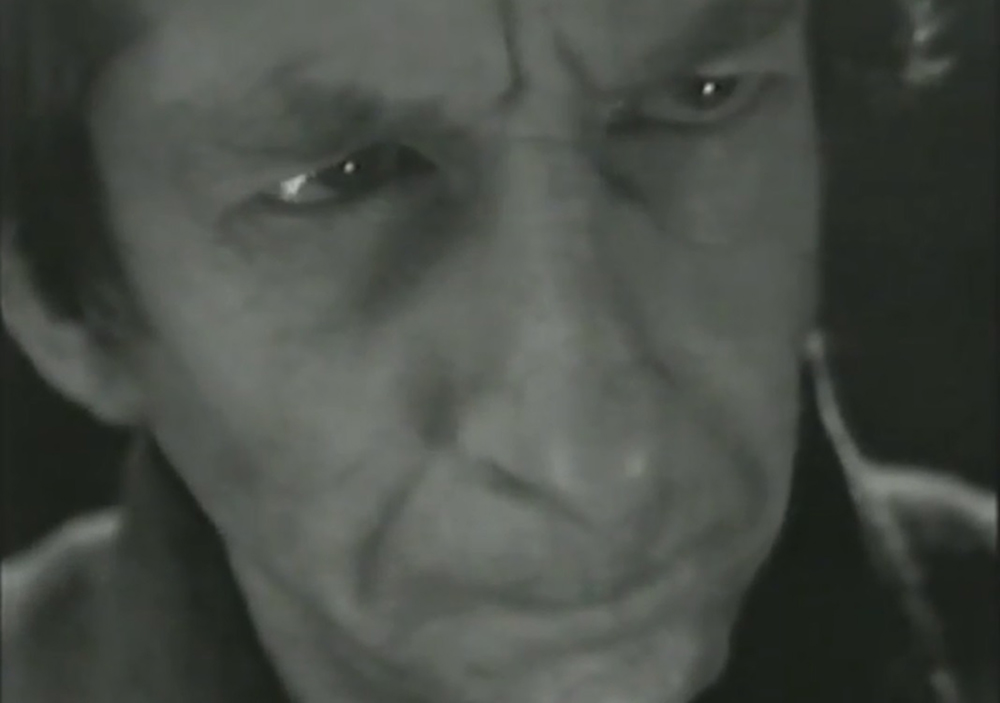
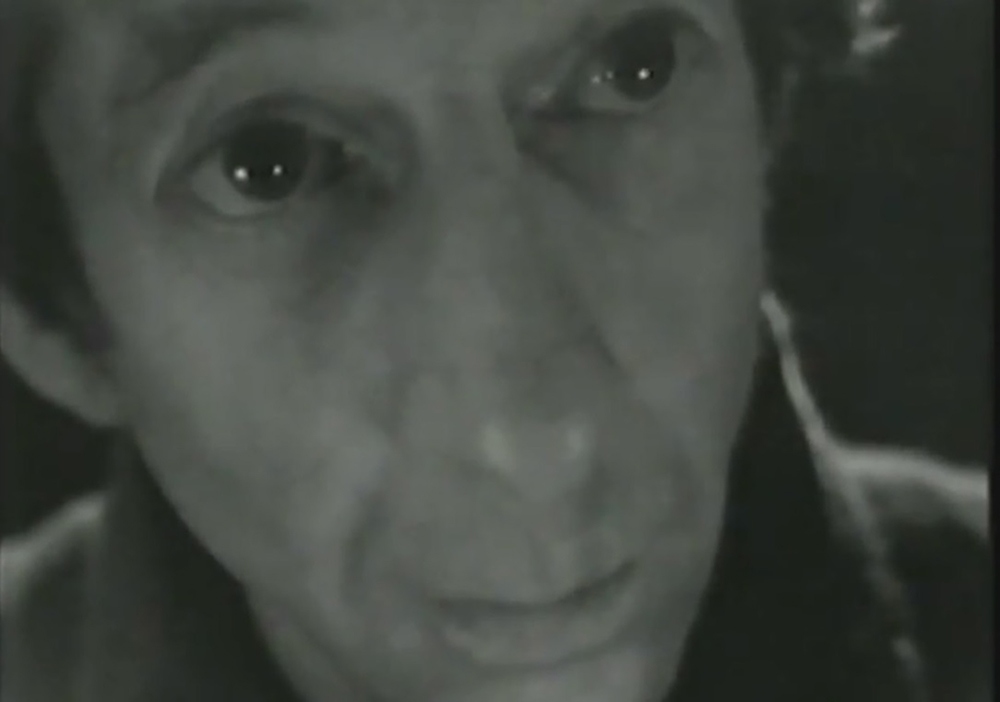
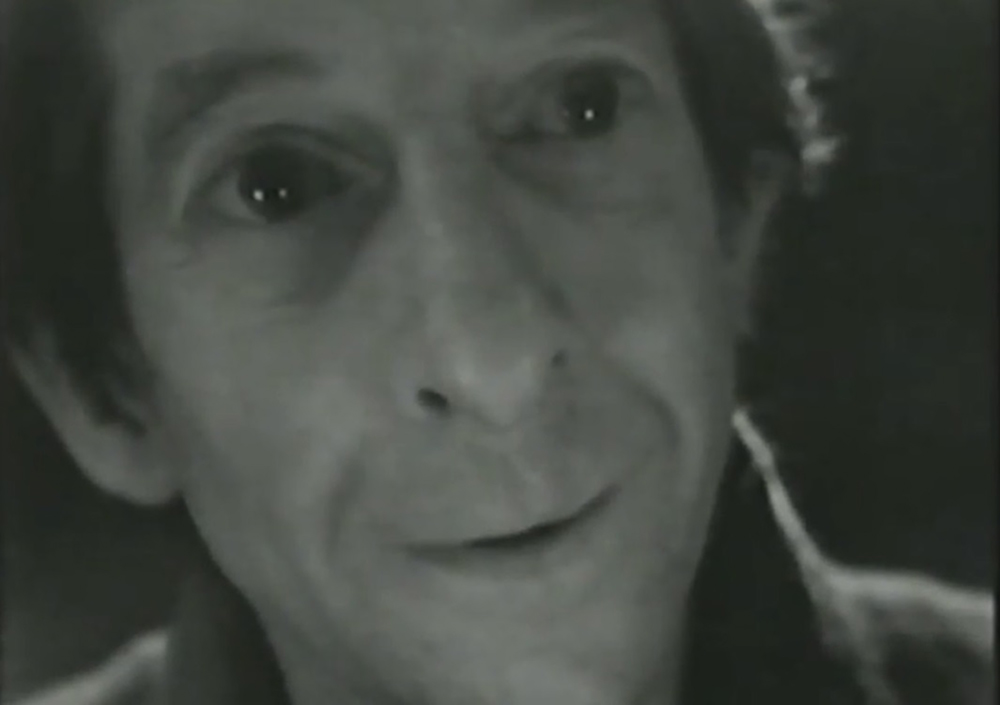
Even if one regards Joe’s masturbation as an interpretive overreach—and I’m no longer sure that it is—Homan is much closer than subsequent critics have been, myself included, in accurately gauging Joe’s reaction to Voice’s monologue. Joe is getting off on this. Referring to the enigmatic smile added at the end of both the British and German productions of the teleplay, Beckett wrote Schneider: “I asked in London and Stuttgart for a smile at the end (oh not a real smile). He ‘wins’ again” (SB to AS, 7 April 1966; Letters IV 23). Critics have always read “He ‘wins’ again” as Joe’s triumph in finally silencing Voice, throttling her into submission. I believe that is an accurate reading insofar as it goes. But if suffocating Voice gives Joe a sadistic thrill worthy of a victorious smile, isn’t it equally plausible that imagining his ex-lover sprawled out on the dark beach in her clinging wet slip gives him a sadistic, voyeuristic thrill, too? This night has played out perfectly from Joe’s perspective, with the suicide of the green one serving as the climax of his desires. He listens intently to his inner voice and visualizes graphically with his inner gaze to derive sadomasochistic visual and aural pleasure, akin to watching porn or a kinky sequence in a horror flick—the kind of Eros-meets-Thanatos thrill that Norman Bates feels for Marion Crane.
Viewed through a Hitchcockian lens, Beckett’s Eh Joe looks less original, less avant-garde, and more perverse than I once thought it was. We are accustomed to measuring Beckett against exalted peers, placing him on a pedestal alongside literary giants. Without question Beckett stands shoulder to shoulder in that company and benefits from those comparisons. Their books were on his shelves, and their influence leaves an indelible imprint on his work. Nonetheless, excavating the full depths of his work occasionally requires descending the mountaintop and dredging the ditches. There is a subterranean Beckett who is less exalted and precious, one equally at home with criminals, derelicts, and sociopaths. Eh Joe provides a brief but revealing glimpse into this monstrous Beckett. Granted, Joe is not as psychotic as Norman Bates, and he is certainly less diabolical than Ed Gein. But all three derived sadistic pleasure from reducing women to sexual objects to be exploited and punished. Beckett does not subvert the male gaze; he directs the gaze inward with the lascivious mind’s eye. In the end, it really isn’t a very big leap at all from the fantasized image Beckett gives us of that dead young woman on the beach and the screen image Hitchcock gives us of dead Marion Crane on the bathroom floor of the Bates Motel.
Acknowledgements
I wish to thank Kevin J. Wetmore, Jr. and Paul Ardoin, my co-panelists for the “Monstrous Beckett” panel at the 2016 Comparative Drama Conference. Both gave me useful insights and suggestions on an earlier version of this paper.
Works Cited
Beckett, Samuel. Eh Joe. The Complete Dramatic Works. Faber and Faber, 1986. 359-67.
---. The Letters of Samuel Beckett, Volume IV: 1966-1989. Eds. George Craig, Martha Dow Fehsenfeld, Dan Gunn, and Lois More Overbeck. Cambridge UP, 2016.
Bloch, Robert. Psycho. Rivercity Press, 1959.
Eh Joe. Dir. Alan Gibson. Perf. Jack McGowran and Sîan Phillips. BBC 2, 1966.
Esslin, Martin. The Theatre of the Absurd. Third edition. Vintage, 2001.
Greven, David. Psycho-Sexual: Male Desire in Hitchcock, De Palma, Scorsese, and Friedkin. U of Texas P, 2013.
He Joe. Dir. Samuel Beckett. Perf. Deryk Mendel and Nancy Illig. SDR, 1966.
Herren, Graley. Samuel Beckett’s Plays on Film and Television. Palgrave Macmillan, 2007.
Homan, Sidney. Beckett’s Theaters: Interpretations for Performance. Bucknell UP, 1984.
---. Filming Beckett’s Television Plays: A Director’s Experience. Bucknell UP, 1992.
Laughlin, Karen. “‘Sadism Demands a Story’: Looking at Gender and Pain in Samuel Beckett’s Plays.” Samuel Beckett: A Casebook. Ed. Jennifer M. Jeffers. Garland, 1998. 159-77.
McMullan, Anna. Performing Embodiment in Samuel Beckett’s Drama. Routledge, 2010.
McTighe, Trish. The Haptic Aesthetic in Samuel Beckett’s Drama. Palgrave Macmillan, 2013.
Mulvey, Laura. “Visual Pleasure and Narrative Cinema.” Feminism and Film Theory. British Film Institute, 1988. 57-68.
Pountney, Rosemary. Theatre of Shadows: Samuel Beckett’s Drama 1956-76. Colin Smythe, 1988.
Psycho. Dir. Alfred Hitchcock. Perf. Anthony Perkins and Janet Leigh. Hollywood: Paramount Pictures, 1960. Film.
Rothman, William. Hitchcock: The Murderous Gaze. Second edition. New York: SUNY Press, 2012. Print.
Schechter, Harold. Deviant: The Shocking True Story of the Original “Psycho”. New York: Pocket Books, 1989. Print.
Stefano, Joseph. Psycho. Hollywood: Script City, 1959. Print.
Weiss, Katherine. The Plays of Samuel Beckett. London: Methuen, 2013. Print.
Whitelaw, Billie. Billie Whitelaw: Who he?: An Autobiography. New York: St. Martin’s Press, 1996. Print.
Zinman, Toby. “Eh Joe and the Peephole Aesthetic.” The Savage Eye / L’Œil Fauve. Ed. Catharina Wulf. Amsterdam/Atlanta: Rodopi, 1995. 53-64. Print.